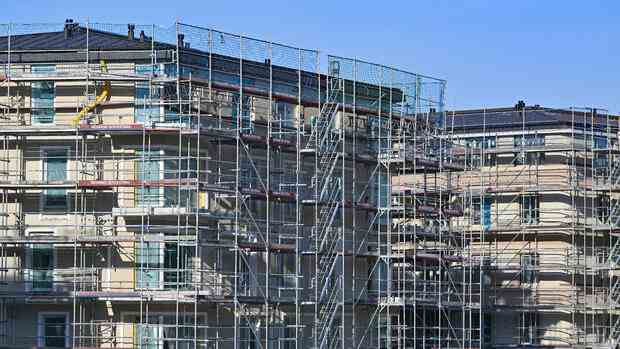The middle rental price segment is particularly affected by the latest developments.
(Photo: dpa)
Affordable housing is a central social task of our time. The traffic light coalition has set itself the goal of building 400,000 apartments per year, 100,000 of which are publicly funded. This goal hardly seems achievable in the current situation.
According to an estimate by the Eduard Pestel Institute, in 2022 only 20,000 social housing units and fewer than 290,000 new homes in total were built. Higher interest rates and rising construction costs will put an additional strain on new residential construction in 2023 and there are increasing reports of canceled orders.
These numbers are frightening. Fear is rampant in the housing industry. While the corona and energy crises have once again increased the need for affordable housing, the supply is collapsing.
The middle rental price segment is particularly affected by the latest developments, as private investors are withdrawing from it and non-profit companies usually concentrate on residential construction in the lower segment. In addition, there are capacity bottlenecks at public and cooperative housing construction companies that cannot be overcome in the short term.
So there is a threat of a new housing crisis that will also affect the middle of society. In such times of crisis, the state must intervene to avert damage to society. But the federal government currently has no instrument to specifically combat the housing shortage in the middle rent segment.
New support program necessary
It can either subsidize every apartment – including luxury apartments – with a watering can, or specifically the construction of social housing for families with low incomes who are entitled to claim.
Tom Krebs is Professor of Macroeconomics at the University of Mannheim.
(Photo: Alex Kraus/Kapix)
In order to avert the upcoming housing crisis, the federal government should launch a new subsidy program that specifically promotes housing construction in the middle rental segment. To do this, it should use the “new non-profit housing” instrument currently being discussed.
The idea is simple: the housing companies receive tax breaks or investment subsidies if they build apartments and offer cheap rents that comply with the upper limits of rent control similar to social housing. But the rents may be above those of social rents and the group of entitled tenants would be much larger.
All housing construction companies have access to the funding regardless of their status as a non-profit company, so that private housing construction companies such as Vonovia AG can also take advantage of the funding.
>> Read here: All the latest news on the energy crisis in the Newsblog
The new funding instrument would primarily strengthen new housing construction, but the funding could also be extended to the energy-related renovation of existing apartments. This would motivate apartment owners to carry out energy-related renovations and at the same time limit the increase in rents – climate protection and social responsibility would be combined. However, minimum requirements should apply so that only significant structural improvements are funded.
Traditionally, the new non-profit housing scheme is understood as a support concept intended to give profit-oriented companies an incentive to transform themselves into non-profit companies.
The predominantly negative reactions from the housing industry make it clear that this goal cannot be achieved – at least in the short term. But short-term solutions are now needed to ensure that the currently difficult situation in the housing industry does not turn into a full-fledged housing crisis. Special times require special measures. The proposed funding instrument moves away from traditional paths and is a modern variant of the new non-profit housing.
More: Why building in Germany is becoming increasingly difficult
